Chances are, if you’re fundraising for a new museum gallery or exhibit, digital marketing is a critical element of your campaign. In part one, we discussed how to create content that will drive action from your audience. In part two, we’ll discuss how to promote this content effectively to reach potential donors.
CREATE A FUNDRAISING CAMPAIGN
Your content is written and almost ready for publishing. Now what? Create a web link to include in your content that allows your audience to donate easily. The easiest way to create a donation link is through a crowdfunding site such as GoFundMe or even Facebook. Or you likely already have an eCommerce component to your museum website as donations are always welcome.
We recommend using a third-party platform, as these securely collect funding with little maintenance on your or the donor’s part. Set up will vary depending on the platform you choose, but for the most part, you’ll need the bank account information for where donations will flow. As you’re making a selection, pay attention to any fees that may incur as your audience donates. We recommend using Facebook as it’s easy to set up, and non-profits do not have to pay fees.
Once your donation link is live and tested, add a call-to-action for donations to each piece of content you’ll be promoting.
PROMOTE SOCIALLY
There’s power in sharing. Once you create your content, your donation link is set up, and media outlets are aware of your project, it’s time to promote in your networks. Identify the channels you’d like to promote your cause on and make sure to post at least once a week. As you’re posting, mix up the post type and publish links, images, or videos. When publishing images or videos, be sure to include your donation or story links, so you’re not missing opportunities to collect funding.
As you’re posting, you must keep an eye on your platform data. Consistently evaluating your posts and frequency will help you make educated decisions that will result in improvements. The most important, meaningful metrics to track are shares, comments, and link clicks. Engagement pushes your posts into more feeds, and link clicks result in conversions. For example, if you’re primarily posting photos and they’re getting a ton of engagement and reach but no donations, consider switching your post type to a link to make the call-to-action (CTA) clear to your audience.
Don’t limit social posts to just your museum’s page, either. Each time you publish a new story or post, send an e-mail to your institution’s volunteers or employees and encourage them to share. There’s strength in numbers, and studies have found that employees account for most of an organization’s engagement!
START AN E-MAIL CAMPAIGN
If you have a list of e-mails from folks that opted into your newsletter, this is an excellent opportunity to target them.
Create a series of e-mails specific to each piece of fundraising content. In short bursts, briefly tease your audience to click on your web links, similar to how you would with social. Mix up the media forms within the body, such as text, images, or videos.
In most e-mail software, you’re able to run A/B tests to determine what media forms are catching the best with your audience. Test varying subject lines, body copy, or media formats, so in later e-mails, you know what’s going to perform well right out of the gate.
As you create new e-mail bursts, be sure to include related links to past promoted content. This will help each story continue to gain momentum throughout the campaign.
HYPERLINK WHEREVER YOU CAN
Speaking of including relevant links, make sure you’re using your website’s real estate wisely. On your website’s homepage, create banners that will link to your fundraising campaign’s relevant links. This is a good opportunity to link to the fundraising page, rather than content directly. If your website has a blog, be sure to include the latest stories on the homepage to grab audience members that might be a little cold to donating.
Within each story created, include related links back to previous content, like you would in your e-mail bursts. This ensures your stories won’t die off through the life of your campaign.
EXTRA BUDGET
If you have extra money to use for your fundraising efforts, consider creating a paid campaign on Facebook, Google, or any other social or search platform you deem worthy.
Create a mixture of ads to A/B test through the campaign’s life cycle. Link directly to the fundraising page and to your content to better determine which format is driving the most web traffic and conversions. As you would with your regular social posts, mix up the media formats. This testing will help you determine how to position your content effectively through your organic efforts.
If you need help setting up a campaign, troubleshooting, or making sure your ads meet best practices, be sure to check for resources on the platform where your ads are running. You can also check out best practice resources such as SocialMediaToday.com, SocialMediaExaminer.com, Moz.com, or NeilPatel.com.
These tips give you the basic fundamentals for creating a successful digital campaign. As you collect donations, understand that it’s all trial and error. What might work for your museum may not work for another. And what works this month, may not work six months from now. Continue to test, adjust, optimize, and you’ll get the results you need.
Do you need help creating a new exhibit, gallery, or museum? Let’s talk.











